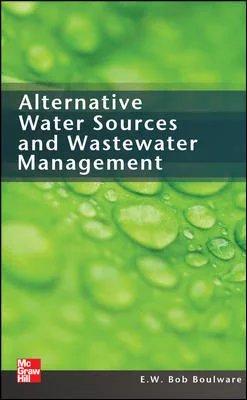2006 Clean Water Report
Water Treatment And Purification Methods

Individuals contaminate, too. Some believe storm sewers, septic tanks or empty lots are safe dumping grounds for home chemicals such as used car oil and cleaning solvents. Disposed this way, these contaminants can find their way into the water supply. In addition, in both rural and suburban areas, pesticides and fertilizers are posing water quality problems. In some regions, the contamination is widespread.
By the time it flows from your customers' taps, water has already been treated with a variety of chemicals and by a variety of processes to clarify it, alter it and disinfect it. Even though some of the more difficult questions are unresolved, the fact remains that many individuals find their water too hard, too cloudy, odorous, funny tasting, or they have health concerns for themselves, their children, and especially during pregnancy or illness.
Tap water is, thus, properly viewed as raw material for further improvement by the commercial, industrial and domestic user.
Both private-well users, estimated at more than 15 million across North America, and an increasing number of consumers on public water systems have decided to install a final barrier of protection or to simply improve the water in their homes or businesses. It is estimated that more than 30 million homes have point-of-use (POU) systems installed, and that number is growing by more than a million a year. Add to this the bottled water industry, and you have an important, publicly acceptable augmentation to central drinking water treatment, or in many cases an alternative to it.
Water quality can be improved at the time the water is to be used, in the appropriate amount and to the desired level. On average, the typical municipal water treatment plant yields 183 gallons per capita per day - but less than 1 gallon per person per day is used for drinking and cooking. The other 182 gallons per capita are used for other purposes, such as sprinkling lawns, flushing toilets, washing laundry, bathing, cleaning streets, fighting fires and industrial uses.
Single problems, such as simple hardness or one contaminant, may be effectively resolved with a single water quality improvement technique. For several problems, the answer might be found in a combination of POU equipment. For example, chlorination may be used for disinfection and the precipitation of iron or hydrogen sulfide, which is then removed by filtration. Or activated carbon may be used in combination with reverse osmosis treatment to remove low molecular weight organic compounds that pass through the RO membranes.
POU Applications
The point-of-use water treatment industry has developed a wide variety of methods for improving water at the point of consumers' use:
All the preceding technologies and processes may be applied at the point-of-use in a variety of ways. Likewise, the range of cost varies and most products are available for outright sale or for rental from one of thousands of water treatment professionals throughout the United States and the world.
Finally, the degree of treatment can be customized to match an individual's specific needs and desires. For example, filtration at a single faucet may remove dirt particles from a rated micron size of 300 microns to below 1 micron, and full household filtration from 50 microns to 1 micron. Asbestos can be removed to undetectable levels with reverse osmosis or fine filtration. Lead, cadmium and similar heavy metals can be reduced by activated carbon and also removed to extremely low levels by ion exchange softening, reverse osmosis, deionization, distillation and electrodialysis. Properly designed activated carbon units and reverse osmosis plus activated carbon units can remove trihalomethanes and other disinfection by product chemicals, to a level below the maximum contaminant level.
In short, the point-of-use water treatment industry offers treatment technologies for which there is widespread and popular need.
The Water Quality Association includes consumer information that could help you diagnose your customer's common water quality concerns and equipment that can be used to reduce or resolve those concerns. Log on to www.wqa.org, then look for the “Consumer's Corner” heading and click on “Diagnose your drinking water.”
Looking for a reprint of this article?
From high-res PDFs to custom plaques, order your copy today!







